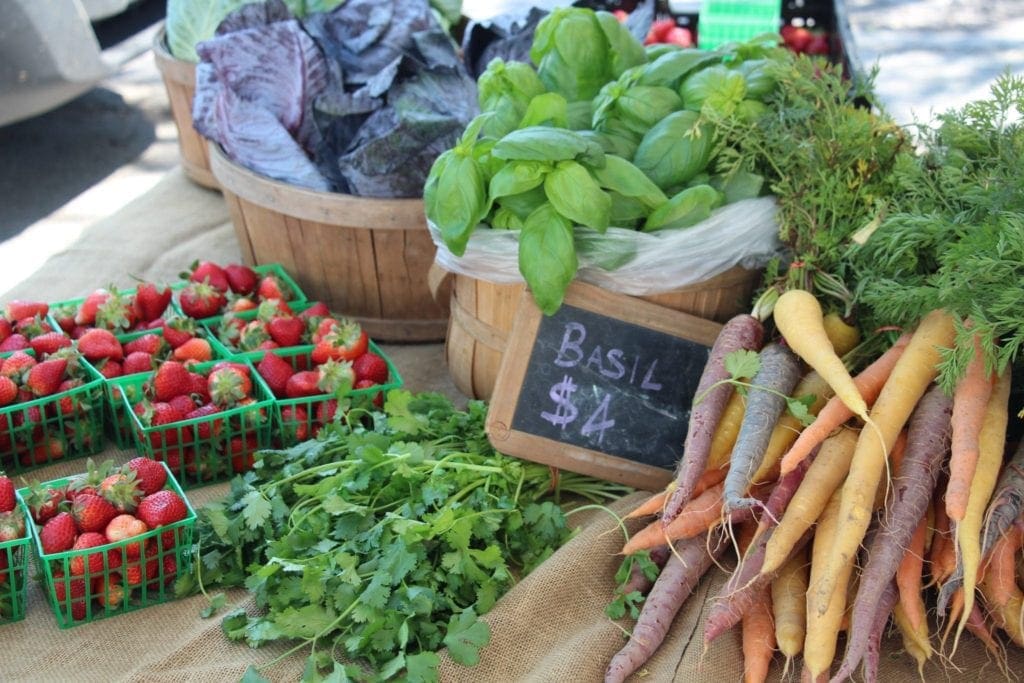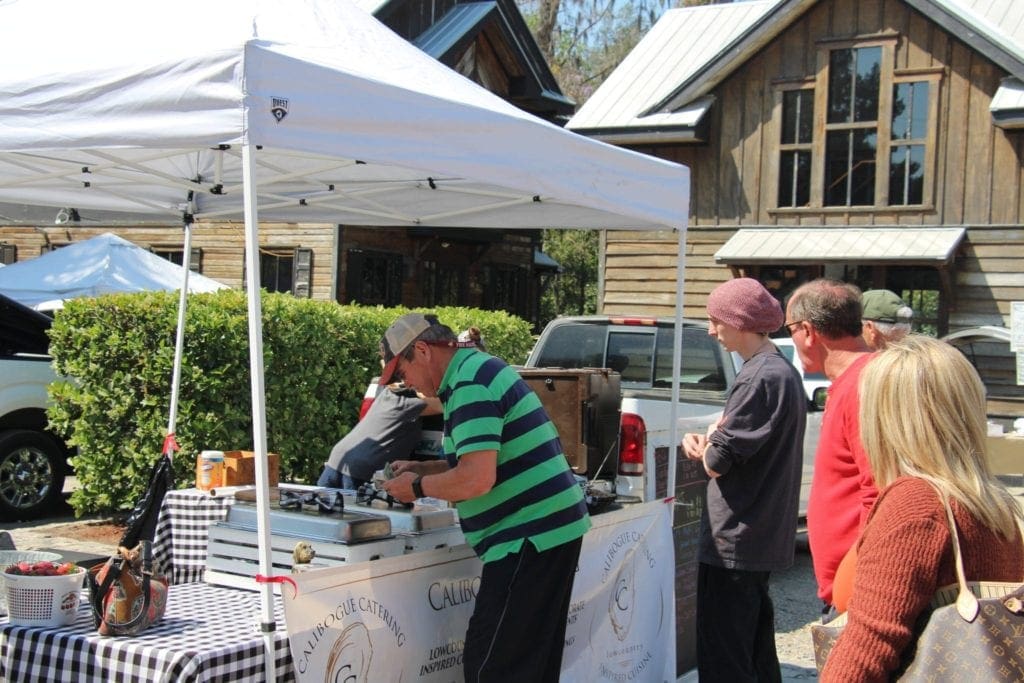Every Thursday from 12:00 pm to 5:00 pm (or dusk) September through May and 10:00 am to 2:00 pm June through August.
Farmer’s Market in Bluffton SC
April
No Events
This weekly event is held on Boundry Street in historic Old Town Bluffton. You’ll find fresh vegetables, fruits, local honey, kettle corn, crab soup, baked goods, and flowers at this open-air market in 2006. You’ll find local artists and craftsmen showcasing their work and products between the fresh produce stands. Make a day exploring the Farmer’s Market by visiting local stores and restaurants. We recommend eating outside at The Pearl Kitchen and Bar or The Cottage. Both places offer great food and are steps away from this open-air market.
Parking can be an issue if you try to park on Calhoun Street afternoon. Typically, you can find plenty of parking on all side streets and at the Town of Bluffton Courtesy Parking lot located down Calhoun Street (This parking lot is on your left before you get to the barricades).
We recommend looking for parking between Water, Allen, and Bridge Street on the back end of Calhoun Street. You can take Boundary Street, which parallels Calhoun Street to Waters. From there, work your way back up (traffic can build and often does grow on May River Road, the main artery of Bluffton), turning onto Calhoun Street.
This open-air market has been a local favorite since 2006 and is a great way to get fresh air and spend time meeting friends.

You’ll find locally sourced produce and vegetables.
Visit The Farmer’s Market website by clicking here. If you’re visiting Bluffton, make this one of your stops. Great way to spend time in Old Town Bluffton and meet new friends!
Why Shop at Farmers Markets: There’s More to Market!
Share these facts with your whole community about how there is more to markets than meets the eye.
Farmers Markets…
-
Preserve America’s rural livelihoods and farmland. Farmers markets provide one of the only low-barrier entry points for beginning farmers, allowing them to start small, test the market, and grow their businesses.
-
Stimulate local economies. Growers selling locally create 13 full-time farm operator jobs per $1 million in revenue earned. Those that do not sell locally create 3.
-
Increase access to fresh, nutritious food. Several studies have found lower prices for conventional and organic produce at farmers markets than at supermarkets. Due to this and other factors, 52% more SNAP households shop at farmers markets and from direct marketing farmers today than in 2011.
-
Support healthy communities. Farmers market vendors educate their shoppers. Four out of five farmers selling at markets discuss farming practices with their customers, and three in five discuss nutrition and how to prepare food.
-
Promote sustainability. Three out of every four farmers selling at farmers markets say they use practices consistent with organic standards.
















